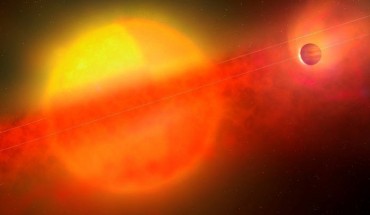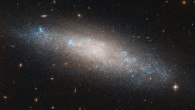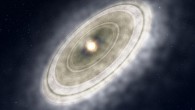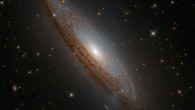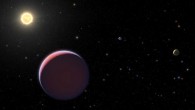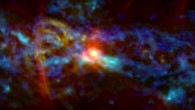Astronomers from the Dispersed Matter Planet Project (DMPP) have discovered three new planetary systems — designated DMPP-1, 2 and 3 — hosting six short-period exoplanets. These planets orbit very close to their parent stars and have surface temperatures between 1,100 and 1,800 degrees Celsius (2,012-3,272 degrees Fahrenheit). An artist’s impression of the giant exoplanet DMPP-2b and its parent star DMPP-2. Image credit: Mark A. Garlick. “These...

